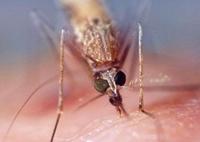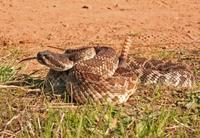-
The true cost of cybercrime
The first systematic study of the cost of cybercrime recommends that society should spend less on antivirus software and more on policing the Internet
-
-
Researchers achieve world record cryptanalysis of next-generation cryptography
Researchers broke a world cryptography record with the successful cryptanalysis of a 278-digit (923-bit)-long pairing-based cryptography, which is becoming the next generation cryptography standard
-
-
Novel antitoxin strategy may target other pathogens
A low-cost, easy-to-replicate tool – based on a “beads on a string” approach — has demonstrated applications against several different toxins, from those found in contaminated food to those used in bioterrorism, and may also prove effective in targeting other types of pathogens
-
-
New salmonella species food safety test kit
Salmonella is a genus of bacteria that are a major cause of foodborne illnesses throughout the world. The bacteria are generally transmitted to humans through the consumption of contaminated food; new salmonella test kit unveiled
-
-
Report: Updated DHS risk assessment of Kansas lab still “technically inadequate”
Congress was unsatisfied with a 2010 DHS risk-assessment study of the proposed National Bio- and Agro-Defense Facility (NBAF) in Manhattan, Kansas, and asked for a new study of the risks, and an evaluation of the new study by the National Research Council; the evaluation says that some of the risk reduction noted in the new DHS risk assessment may be explained by improvements to the latest design plans for the facility, but that despite these improvements, the updated DHS assessment underestimates the risk of an accidental pathogen release and inadequately characterizes the uncertainties in those risks
-
-
New Red Cross first aid app brings safety tips to smart phones
The American Red Cross today (Wednesday) launched its official first aid app, putting free lifesaving information in the hands of smart phone users. The Red Cross says this app is the first in a series to be created by the organization
-
-
Researchers create mosquitoes incapable of transmitting malaria

More than 40 percent of the world’s population lives in areas where there is a risk of contracting malaria; 300 million to 500 million cases of malaria occur each year, and nearly one million people die of the disease annually — largely infants, young children, and pregnant women, most of them in Africa; scientists breed mosquitoes to be unable to infect people with the malaria parasite, providing genetic options for controlling spread of deadly disease
-
-
Better tracking of influenza
Brown University researchers have created a reliable and fast flu-detection test that can be carried in a first-aid kit; the prototype device isolates influenza RNA using a combination of magnetics and microfluidics, then amplifies and detects probes bound to the RNA; the technology could lead to real-time tracking of influenza
-
-
Global food-trade network vulnerable to fast spread of contaminants
As the world’s population climbs past seven billion, the sustainable production and distribution of food is balanced against the need to ensure its chemical and microbiological safety; this is not easy: a rigorous analysis of the international food-trade network shows the network’s vulnerability to the fast spread of contaminants as well as the correlation between known food poisoning outbreaks and the centrality of countries on the network
-
-
Improving malaria control and vaccine development
Each year more than 250 million people worldwide contract malaria, and up to one million people die; malaria is particularly dangerous for children under five and pregnant women; Plasmodium falciparum is the most lethal of the four Plasmodium species, and is responsible for most clinical disease
-
-
Rattlesnakes in San Diego: potent, powerful venom a cause for concern

For the second year in a row, University of California-San Diego Medical Center toxicologists are reporting unusually powerful snake bites and unusually extreme patient reactions to those bites; since January, several patients have suffered bites with severe symptoms, such as difficulty breathing, often after a bite from the Southern Pacific Rattlesnake
-
-
Veterinary profession trends short-change biosecurity, food security, public health
More than half of veterinary students in the United States seek training in companion animal or pet medicine – with fewer and fewer graduate veterinary students pursuing Ph.D. training which would prepare them for academic careers, key jobs in the public sector, and some positions in industry; the result is a dwindling supply of veterinarians to fill jobs overseeing and enforcing food safety and animal health standards, conduct research in human drug development and advances in pet health, and participate in wildlife and ecosystem management, infectious disease control, biosecurity, and agro-terrorism prevention
-
-
A 50-year cholera mystery solved
For fifty years scientists have been unsure how the bacteria that gives humans cholera manages to resist one of our basic innate immune responses; that mystery has now been solved
-
-
Scientists show why swine flu virus develops drug resistance
H1N1-2009 is a new, highly adaptive virus derived from different gene segments of swine, avian, and human influenza; within a few months of its appearance in early 2009, the H1N1-2009 strain caused the first flu pandemic of the twenty-first century
-
-
New approach to attacking flu virus
Researchers demonstrate ways to use manufactured genes as antivirals, which disable key functions of the flu virus; the proteins have proven effective in attacking many pandemic influenza viruses, including several H1N1 (Spanish flu, Swine flu) and H5N1 (Avian flu) subtypes
-
More headlines
The long view
We Ran the C.D.C.: Kennedy Is Endangering Every American’s Health
Nine former leaders of the Centers for Disease Control and Prevention (CDC), who served as directors or acting directors under Republican and Democratic administrations, serving under presidents from Jimmy Carter to Donald Trrump, argue that HHS Secretary Roert F. Kennedy Jr. poses a clear and present danger to the health of Americans. He has placed anti-vaxxers and conspiracy theorists at top HHS positions, and he appears to be guided by a hostility to science and a belief in bizarre, unscientific approaches to public health.
